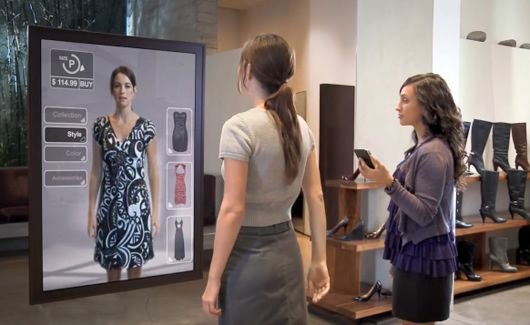video wall display system solutions

Break-free videowall solutions allow for many possible display formats. It can be easily expanded, allowing you to attract attention effectively. Download and try the video wall screen.
In this article, we will explain in detail each technology separately and what are the uses and benefits of the videowalls, and how to install it through the company “Ultravision” for audiovisual.
Video wall
- Ultravision offers a complete 360° approach to video wall solutions by providing OEMs, system integrators, and AV installers with the industry’s most comprehensive range of hardware and software products to meet any video wall or digital signage project. Ultravision delivers an unrivaled and ever-evolving feature set that includes HDCP capture, industry-leading density per footprint, dynamic artistic, configuration support, and more.
- The professional-grade DDW LCD HD video wall is the perfect solution for tiled video wall applications in small to medium-sized control rooms.
- Ultra-thin bezel series include 46″, 47″, and 55″ LED-backlit LCD monitors, combining high brightness and wide color gamut with an ultra-narrow bezel for excellent visual performance.
- A video wall is a special multi-monitor setup that consists of multiple computer monitors, video projectors
Main Features of Videowall Display Systems:
- Support a variety of signal ports.
- Built-in splicing unit, support splicing function.
- Support cross-screen PIP window creation, roaming, scaling, and PIP.
- Support for common matrix control.
- Unique DNX motion supplement image processing technology.
- Dynamic picture without motion effect.
Main Parameters of Videowall Display Systems:
- DDW Original Commercial Grade LCD Video Display Panel, 16:9 Samsung a-Si TFT-LCD
- Only 1.8mm ultra-narrow frame, high quality, practical, good vision effect.
- 2 x HDMI Input, DVI Input, VGA Input, AV Input, DP Loop In Output, RS232 Input Out.
- FHD video wall unit – high brightness, high contrast, high color gamut.
- Flexible structure design – easy installation, expandable, arbitrary combination.
- Stable performance, suitable work for a long time.
Build interactive video walls with Ultravision:

Interactive video walls are useful tools for engaging an audience or collaborating with colleagues.
-
Build interactive wayfinding kiosks with multiple displays to help people understand where they are now and how to get where they’re going.
-
Help get students involved with an interactive display wall in learning environments.
-
Involve museum visitors with a hands-on exhibit.
-
Create eye-catching dynamic digital signage installations to engage your audience.
How to save or load the current video layout:
- This layout is saved on the remote computer (client) and not on the control computer. Using the diagram as an example, the diagram will be saved to computer B or C (if C is connected) but not to computer A.
Each connected (recorded) video wall client saves (or uploads) its client layout to its device.
- However, the chart name is also saved in the database.
Update
If you click the Refresh button, all screens will be refreshed immediately, except that the videowall window updates every screenshot of the camera view in cyclic order. It takes 30 seconds to update all camera views.
Zoom in/Zoom out
Allows you to enlarge the layout. Do not enlarge images on remote (registered) clients.
full-screen mode
In Video Wall Manager, you can double-click a panel to view the image in full-screen mode. Double-clicking again restores the display to the previous state.
How to configure and manage video walls from a client:

The mission
- Register the computers (clients) whose monitors will be used in the video.
- Log in to each computer (client) that is physically connected to the display devices that will be used in the video wall. Using the following diagram as an example, you will log on to the computer (client) B, C, or both.
- Run the Symphony client software.
- The Videowall dialog will open. Click the Video Client Configuration tab.
- Click Register the current Symphony client. This allows you to control this registered client remotely from the video window that you will create in Task 2. For connection, type select Always AIRA. (You will be able to remote control video, switch cameras, create/change/close multi-view, and more for this registered client.) Aimetis SDK for this feature.
Videowall design
- Log in to the computer (client) that you want to use to design the layout of the video, and control the computers you registered in Task 1. Using the following diagram as an example, you will log in to computer (client) A.
- Run the Symphony client.
- Select the videowall, The video dialog will open.
- From the File menu select Video Design. The video wall designer will open.
- Click New to create a new layout. By default, the layout is named VideoWall1.
- Select the name of the video wall, and click Open. A message appears in the Layout field, indicating that you must now select the display devices to be used in the videowall you plan to design. Using the diagram as an example, you would select a B-monitor 1 or 2, or a C-3 or 4 monitor.
- Select the video display device icon link and drag it to the network. If more than one monitor is connected, drag it to the network as well.
- You can give the monitor a short name, which is easy to identify, for example, Monitor B.
Adjust videowall layout
- Launch the Symphony client on the computer on which you designed the video-wall layout.
- From the Server, menu select Video Wall. The Video Wall dialog will open.
- Click on the Video-Wall tab.
- From the Current Video-Wall drop-down field, select a layout. (This is the layout you saved in step 2.)
Finally
At the end of this article, it has been clarified about everything related to the Video walls, their most important uses, specifications, importance, and it features So, you can order it through us at Ultravision for audiovisual services Any special request can also be provided for you according to your desire and we discussed the Building of interactive video walls with Ultravision, In addition to How to configure and manage video walls from a client
All you have to do is contact us on our numbers or by leaving a comment so that our team will contact you immediately with 24-hour service, in addition to providing after-sales service.


